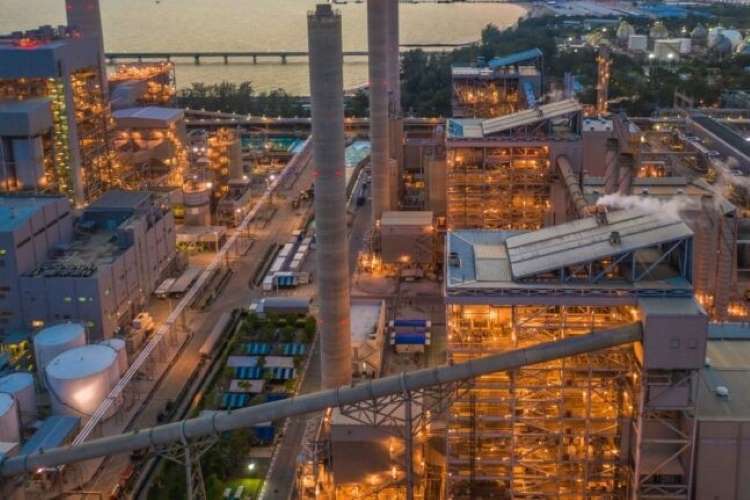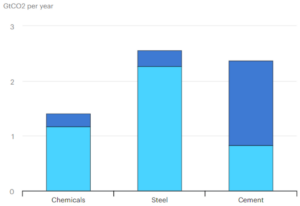
Germany has recently unveiled the Low Emission Steel Standard, a pioneering voluntary labelling programme aimed at classifying steel products based on the carbon dioxide emissions generated during production. This initiative, developed by the German Steel Federation and the federal ministry of economics and climate protection (BMWK), is set to be introduced in late 2024 and is expected to set the benchmark for sustainable steel production globally. As the global economy moves towards a low-carbon future, standards like LESS are becoming essential tools for encouraging industries to adopt more sustainable practices.
The Low Emission Steel Standard framework categorises steel into five classes based on the carbon footprint and the amount of scrap content used in production. These classes range from ultra-low emission (Class A) to high emission (Class E). The classification is determined by the product carbon footprint and the scrap content, both of which are verified by independent third-party auditors to ensure transparency and credibility.
READ I Chinese FDI: India must weigh risks and rewards
What is Low Emission Steel Standard
Class A represents the highest standard, characterised by ultra-low carbon emissions and the highest scrap content. This steel is produced using advanced Electric Arc Furnaces (EAF) with high efficiency, renewable energy sources, or innovative hydrogen-based reduction processes. Class B also emphasises low emissions and high scrap content but may involve slightly less advanced or hybrid production methods. Class C steel represents a moderate carbon footprint and scrap content, typically produced through traditional blast furnace methods that are beginning to incorporate low-carbon technologies or partially optimised EAF processes.
Steel industry and global emissions

Class D and Class E have progressively higher carbon footprints and lower scrap content, with Class E representing steel produced predominantly through traditional blast furnace methods with minimal integration of low-carbon technologies. This comprehensive classification system provides a clear and straightforward method for evaluating the environmental impact of steel products, making it easier for consumers and businesses to make informed decisions.
Impact of the new standard
The significance of Low Emission Steel Standard extends beyond Germany, as it represents a broader push towards reducing emissions in the steelmaking sector, which is responsible for approximately 7% of global CO2 emissions. By setting clear, stringent standards, LESS not only promotes transparency and comparability in the steel industry’s decarbonisation efforts but also encourages the adoption of more sustainable practices worldwide. Given its potential for wider adoption by other developed countries, LESS could soon become a global standard for low-emission steel, influencing international trade and production practices.
However, the introduction of LESS poses significant challenges for the Indian steel industry, which is already facing difficulties due to declining exports, increasing imports, and the impending implementation of the European Union’s Carbon Border Adjustment Mechanism (CBAM). India’s steel exports have dropped by 31.2% from FY2022 to FY2024, while imports have surged by 37% during the same period, turning India into a net importer of steel. The Indian steel industry predominantly relies on the blast furnace-oxygen steelmaking (BF-BOS) method, which has a higher carbon footprint compared to the electric arc furnaces (EAFs) and hydrogen-based steelmaking processes favoured under LESS.
The classification system of Low Emission Steel Standard, with its focus on carbon footprint and scrap content, presents a particular challenge for Indian steelmakers, as much of their output would likely fall into the lower LESS categories (C, D, and E). These categories may become less competitive in global markets, particularly in Europe, where sustainability standards are increasingly stringent. The potential for countries adopting LESS to ban or restrict imports of higher-emission steel further exacerbates the risks for Indian steel producers, who could face significant barriers to accessing key markets.
Strategies for Indian steelmakers
To remain competitive and align with Low Emission Steel Standard, Indian steelmakers must undertake several strategic actions. First and foremost, there is a critical need for investment in low-carbon technologies. This includes transitioning to Electric Arc Furnaces, exploring hydrogen-based steelmaking processes, and adopting carbon capture and storage technologies. These investments are essential for reducing emissions and producing steel that meets the higher standards required under LESS.
Furthermore, collaboration across the supply chain is vital. Indian steel producers should work closely with suppliers and other stakeholders to reduce emissions at every stage of production. This could involve sourcing raw materials with lower carbon footprints or adopting more sustainable logistics practices. Conducting comprehensive carbon footprint assessments is another crucial step. These assessments will help identify areas where emissions can be reduced and provide the data needed to obtain LESS certification, which is becoming increasingly important for gaining market access in countries that adopt these standards.
The role of the Indian government in this transition cannot be overstated. The government needs to develop clear and supportive policies that encourage low-carbon steel production. This could include providing tax incentives, funding research and development in low-emission technologies, and investing in the necessary infrastructure, such as renewable energy sources and efficient transportation networks. Aligning national standards with LESS will also be essential to facilitate trade with countries adopting these standards, ensuring that Indian steel products can compete on an equal footing in global markets.
The adoption of LESS represents both a challenge and an opportunity for the Indian steel industry. While the transition to low-carbon steel production will require significant investments and changes in production methods, it also offers the chance to enhance competitiveness in the global market. By proactively adopting low-emission technologies and aligning with international standards like LESS, Indian steelmakers can secure a stronger position in the evolving global marketplace.
The government’s support in this transition, through policy measures and infrastructure development, will be instrumental in ensuring that India’s steel industry can meet the challenges posed by LESS and other similar standards likely to emerge in the future. The road ahead is challenging, but with strategic planning and concerted efforts, the Indian steel industry can navigate the transition to a low-carbon future and continue to thrive in the global market.
